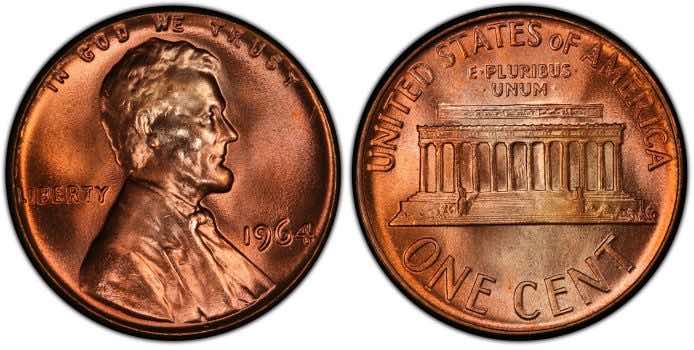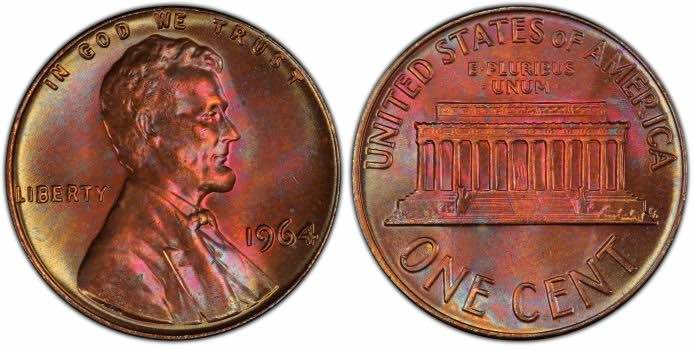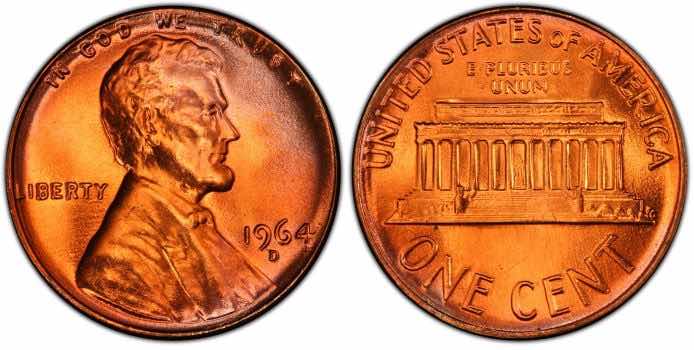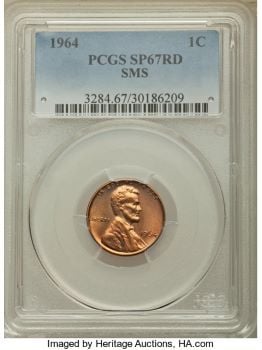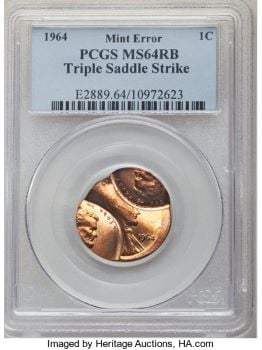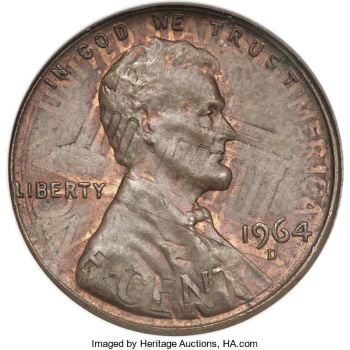Ed. note: This article is periodically updated to reflect the current price of most valuable coins.
In Coleccionistas de Monedas, we fight against the misinformation surrounding the world of coins on the Internet. For this reason, our articles are entirely written by people, not AI or other automated systems. Additionally, we link to all sources and references for coin prices, with the goal of providing you with real, updated, and reliable information.
How do we verify coin prices and values?
At Coleccionistas de Monedas, we are committed to providing accurate, trustworthy, and well-sourced numismatic information. We understand that articles about coin values can influence important financial decisions, which is why we apply a clear and rigorous methodology to estimate prices.
Sources used
- PCGS Price Guide: The official pricing guide from the Professional Coin Grading Service.
- NGC Price Guide: Updated valuation system from the Numismatic Guaranty Company.
- Heritage Auctions: Database of real auction sale prices.
- Red Book: Printed guidebook with historical pricing by grade.
- eBay Sold Listings: Only completed sales are considered, not asking prices.
Validation process
- Price review by condition grade using standard scales (MS, AU, XF, VF).
- Verification of varieties and errors through multiple data sources.
- Expert consultation when prices significantly deviate from the norm.
- Regular updates to reflect current market trends.
Important disclaimer
The values presented in this article are for reference purposes only. Final coin prices can vary significantly depending on authenticity, grade, and selling context. We strongly recommend having your coin certified by a professional service such as PCGS or NGC before selling or purchasing it as an investment.
How much is a 1964 Lincoln cent worth? Pennies are probably the most collected American coins in the world. The value of a 1964 penny varies based on its condition, rarity, and whether it has any notable errors. Due to their common circulation (could still actually be found in pocket change), they are usually found quite worn, so conservation is one of the most important factors for their high price.
Key Takeaways
- (2024 UPDATE) Last year, a 1964 1C Doubled Die Reverse, FS-802, MS64 Red was auctioned by Heritage Auctions for a price of $384 (reference). More recently, in March 2024, the auction house Heritage auctioned two specimens of 1964 1C Double Die Reverse, DDR-001, MS64 Red ANACS silver coins for values of $95 and $91.
- A 1964D penny can be worth from $2 to nearly $5,000. Features such as its condition, grade, and patina make it a highly sought-after piece by coin collectors.
- Most of the time you can get it very cheap, however, there are extraordinary cases like, for example, this penny from 1964, variety 1C MS67 RD, auctioned for $7,931.25 by Heritage Auctions (reference).
1964 Penny Value
How much is a 1964d penny worth? Coleccionistasdemonedas.com Estimated Value of 1964 Penny is:
| 1964 Penny value Chart (includes D) | |||||
| 1964 Penny | MS63 | MS64 | MS65 | MS66 | MS67 |
|---|---|---|---|---|---|
| 1964 Penny BN (brown) Philadelphia | $- | $- | $- | $1 | $- |
| 1964 Penny RB (red and brown) Philadelphia | $- | $- | $2 | $20-40 | $- |
| 1964 Penny RD (red) Philadelphia | $3 | $5-6 | $10-12 | $20-65 | $950-13,500 |
| 1964 D RB (red and brown) | $- | $- | $2 | $- | $- |
| 1964 D RD (red) | $3 | $5-8 | $20-22 | $30-85 | $450-4,750 |
Want to know if your coin have a valuable patina? Just keep reading!
Here you will learn:
- What makes a 1964 Kennedy half dollar rare? a list of rare coins.
- What are the most valuable 1964 pennies (aka 1964 Lincoln cents)?
- How to recognize the most sought-after patinas?
- What do the letters BN, RB, and RD stand for?
JUMP TO SECTION
If we talk about the 1964 Penny Lincoln Cent, the patina is a factor of great importance. Certain errors can greatly increase their value, mainly due to their being extremely scarce (limited number) and in high demand by collectors of American coins.
What makes a 1964 Kennedy half dollar rare?
In the early 1960s, there was a major coin shortage, presumably due to collectors’ hoarding of circulating silver coins. The U.S. Mint blamed coin collectors for the coin shortage.
Indeed the only coins that contained silver were the Kennedy half dollars from 1965 to 1970, but their composition was not too pure either. They included only 40% silver. Thus, the U.S. Mint devised the SMS (Special Mint Sets) from 1965 to 1967 to eliminate the shortage of circulating coins. What does a coin collector look for in the first place? The mint mark. Therefore, to discourage the public from hoarding coins, the Mint issued all Mint Special Set coins from 1965 to 1967 without any mint mark.
This type of coin is very abundant, with a mintage of over 6.4 billion coins. In addition, there are two mint marks for their manufacture, a typical factor that distinguishes American coins in price, so one must look at other differences to determine a higher or lower value.
The main factor to consider is the quality, as in any other coin, as we will see later, but now let’s talk about the patina.
The patina is the result of the oxidation of the metal by contact with air and other elements that causes some or other tones or colors.
An original patina, generated by the years of “life” of the coin is highly valued by collectors, so you should never clean a coin without consulting an expert since in most cases you will greatly diminish its value.
1964 penny RD vs RB vs BN
In the 1964 Penny, as in the rest of the modern cents up to 1982, due to its high copper content (95%), there are three different patinas, mostly. These are collected by three different abbreviations, BN, RB, and RD. Each one is more complex to find than the previous one, which is why the price increases due to the difficulty.
- BN – Brown: This patina is brown, and is the most common of the three, visually it is the one that looks the most aged and, in fact, is the color that copper coins normally take on over time. You can check your current pennies and see how many have this dark, yet attractive color.
In some specimens with this patina that have not been circulated very often, greenish or bluish colors can be seen, normal in this metal, which makes it much more striking.
- RB – Red brown: This is the abbreviation for Red and Brown, i.e., as the previous patina, it is a brown specimen, but retains the typical reddish tones of a newly minted copper coin.
It is the result of better environmental conservation, or at least with less exposure to humidity and oxygen than the previous one, regardless of whether a BN has hardly been circulated, but has been stored in a humid place.
This makes it somewhat rarer than the previous one and therefore costs a little more money.
- RD – Red: It is the red patina that copper coins have when they are newly minted, the rarity of this patina is the difficulty for a coin to be preserved with that tone for so many years.
It is the most expensive patina of the three, being the most appreciated by collectors.
With coins as common as these, priority is given to the most special patinas, so a BN or RB may be undervalued, while an RD makes the coin more expensive because it is so rare in common coins.
While certain coins have sold for thousands of dollars, the vast majority of 1964 pennies are only worth their face value.
To preserve the actual patina of our coins, it is important to keep them in a stable and controlled place. That is why certified capsules are a wonderful option both for this and for knowing the grade as we will see below.
A little history about the 1964 Lincoln cent
In 1959 U.S Mint decided the 1c coins change its familiar Wheat Reverse to a design commemorating the Lincoln Memorial (more about 1959 Lincoln Cent).
The material of our penny in question consists of 95% copper and 5% Zinc, weighing a total of 3.11 grams for its 19 millimeters in diameter.
1964 is a year noted for its poor penny mintages, which is why certain errors stand out from other years.
Although they are very common in medium quality and practically worthless as we have seen in the table, excellent quality drives up the price.
1964 Penny mintmarks
They were coinage in two U.S Mints since San Francisco Mint stopped manufacturing these cents in 1955:
-
1964 Penny no mint mark: Coins produced at Philadelphia. 2,648,575,000 1964 pennies were struck.
-
1964 Penny Mintmark “D“: Denver. A total of 3,799,071,500 coins were minted.
Where is the mint mark on a 1964 penny? Easy, just below the date of coinage.
How to grade a 1964 penny?
The higher the grade, the higher the price increases exponentially, since it is a factor of great importance, especially in coins that tend to circulate a lot, as in the case of cents.
To know the state of conservation of the coin we own or want to buy we need to have an expert eye that we can hardly acquire without time or experience. That is why it is not a bad idea to resort to TPG (Third Party Grading Service). These are grading companies dedicated to evaluate and grade our coins according to their condition. In addition, they certify the authenticity and encapsulate the coin for security purposes, both for its preservation and to facilitate its sale.
If you think you have a rare 1964 penny, you should have it certified by a reputable 3rd-party coin gradings firm such as PCGS, NGC, ICG, or ANACS. Then, if you wish to sell it, offer it to a coin dealer who can pay you what it’s worth.
Rare series: Cameo type editions, SMS coins and D variants
There are also proof coins (list of U.S. Proof Sets with prices), of which almost 4 million were minted, but the rarest of this year’s pennies are undoubtedly the 1964 SMS penny as we will see below.
Rare errors on 1964 pennies
As we have already said, the 1964 Penny is quite common in general, but certain exceptions are very valuable, and it is worth knowing at least some of them in case we come across similar specimens.
1. 1964 Penny Rare SMS 1C
These Sms coins are still a mystery today. They are believed to have been prototypes struck in Philadelphia or San Francisco for the SMS (special mint set) minted between 1965 and 1967. Between 20 and 50 of these SMS, coins are believed to exist, and experimental markings can be seen on the 1964 Penny itself. Most examples of this issue are valuable for coin collectors anyway.
We can take as a reference of its current value this 1964 1C SMS SP67 RD which sold for $15,600 in 2019 by HeritageAuctions.
2. 1964 Penny Rare 1C Triple Saddle Strike
In this 1964 penny, we can appreciate a multiple minting error. This consists of striking the original copper more than once. Specifically, there are 3 “Lincolns” on the same penny!
It was auctioned by Heritage Auctions in 2020 for a price of $1,440, being MS64 RB. See here.
3. 1964 D penny error L on the edge
This 1964 Denver Penny was minted over another one of the same mint from the previous year, 1963. This error is perfectly visible as we can see the Lincoln memorial behind the bust of the president, and on the reverse, we also see deformities typical of one mintage over another.
Heritage Auctions sold this MS64 BN copy for $4,312.50 in 2009 – not bad for a penny!
What makes a 1964 penny rare?
Here’s a quick recap of 1964 penny values ordered by coin prices:
| 1964 Pennies worth Chart (includes D) | |||||
| Variety | MS63 | MS64 | MS65 | MS66 | MS67 |
|---|---|---|---|---|---|
| 1964 Penny BN (brown) Philadelphia | $- | $- | $- | $1 | $- |
| 1964 Penny Penny RB (red and brown) Philadelphia | $- | $- | $2 | $20-40 | $- |
| 1964 Penny RD (red) Philadelphia | $3 | $5-6 | $10-12 | $20-65 | $950-13,500 |
| 1964 D Penny RB (red and brown) | $- | $- | $2 | $- | $- |
| 1964 D Penny RD (red) | $3 | $5-8 | $20-22 | $30-85 | $450-4,750 |
This article does not constitute financial advice. Always consult a professional numismatist before making investment decisions.
References and sources
Coleccionistas de Monedas writers use primary sources to support their work. Primary sources include technical reports, government reports, original articles, and interviews with experts in the coin and investment sector. We also reference original research from other reputable editors when appropriate. You can learn more about the standards we follow to produce accurate and unbiased content in our editorial policy.
- PCGS. “PCGS: Lincoln Cent (Modern) (1959 to Date), https://www.pcgs.com/auctionprices/category/lincoln-cent-modern-1959-date/47″
- Heritage Auctions, “What’s My Coin Worth?, https://coins.ha.com/ref/price-guide.zx”
- NGC Coins, “NGC Price Guide, https://www.ngccoin.com/price-guide/united-states/”
- The Official Red book 2024, “A Guide Book of United States Coins, https://g.co/kgs/8TcE3yq”
- Wikipedia, «Listof most expensive coins, https://en.wikipedia.org/wiki/List_of_most_expensive_coins»
- Yahoo Finance, «9 Rare American Coins That Are Worth a Lot of Money, https://finance.yahoo.com/news/9-rare-american-coins-worth-120155095.html»

